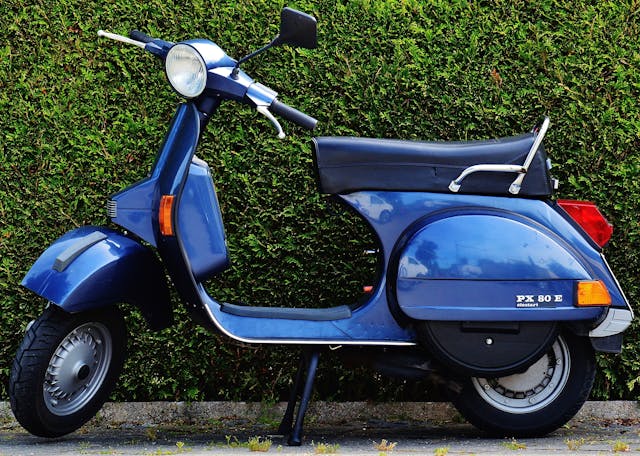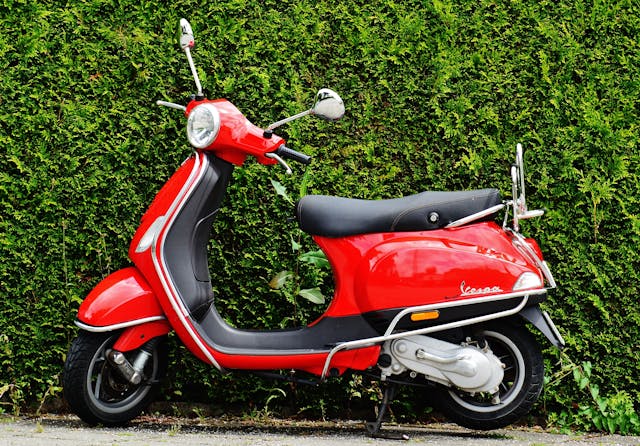Delving into the labyrinth of Illinois moped regulations calls for an in-depth grasp of the unique stipulations and codes inherent to the state. Christened as “the Prairie State” owing to its generous expanses of grassland, Illinois serves as a veritable paradise for moped buffs, with highways meandering through picturesque rural vistas. Nonetheless, steering a moped in Illinois entails more than simply jumping on and zooming off—it necessitates comprehension and adherence to prevailing laws to affirm a lawful and secure ride.
A question frequently poised on the lips of prospective moped riders in this dominion is “Does one require a license for operating mopeds in Illinois?” The retort is resounding—yes. The state ordinances unequivocally dictate that any individual helming a moped must possess either a legitimate driver’s license or else hold an official moped permit. The intricacies embedded within these regulations might seem formidable to fresh-faced riders but armed with robust knowledge of these rules along with appropriate readiness, one can navigate their way towards becoming an authorized operator with tranquillity and certainty.
- The first regulation stipulates that an individual must possess a valid driver’s license or moped permit to operate a moped in Illinois. This mandate is non-negotiable and applies across the board to all potential riders, irrespective of their age or experience level.
- Additionally, it is essential for all mopeds to be registered with the Department of Motor Vehicles (DMV). Registration ensures that your vehicle can be legally operated on public roads and also aids in its identification should it ever get stolen or involved in an accident.
- Another critical rule revolves around safety equipment. All operators are required by law to wear protective headgear while riding—this includes both helmets and eye protection. Helmets must meet the standards set by the U.S. Department of Transportation (DOT).
- Riders under 18 years old are further obligated to complete a state-approved motorcycle training course before they can legally ride on public streets.
- Mopeds cannot exceed speeds of 30 miles per hour on any highway in Illinois, as per state laws. Moreover, these vehicles should not have engines larger than 50 cubic centimeters.
- Riders must always use hand signals when turning or stopping if their moped does not have electrical turn signals installed.
- Lastly, mopeds are prohibited from being ridden between sunset and sunrise unless equipped with proper lighting.
By adhering strictly to these regulations set forth by Illinois authorities, you will ensure not only your personal safety but also contribute towards maintaining orderliness and decorum on highways throughout “the Prairie State”.
The Legal Definition of a Moped in Illinois
Within the legal framework of Illinois, a moped is construed as a vehicle with two or three wheels, powered by an engine no greater than 50 cubic centimeters and incapable of hurtling beyond speeds of 30 miles per hour on level terrain. Further, it is legally bound for any moped’s power propulsion system to be devoid of gear shifting. This regulatory stipulation aptly addresses queries pertaining to “How fast can mopeds go in Illinois?” Irrespective of personal modifications rendered, the lawfully sanctioned apex speed for a moped must not surpass 30 mph.
In response to inquiries such as “Are electric mopeds street legal in Illinois?”, the law sanctions usage of electric mopeds on public thoroughfares provided they comply with aforementioned regulatory specifications. Verily, electric mopeds bridge a void within our transportation matrix while favoring both environment and economy; they deliver efficient travel solutions which curtail our carbon footprint. Nevertheless, an electric moped that has capability to breach state-imposed speed constraints or possesses an engine exceeding defined capacity fails to qualify under Illinois’ legal description for a moped.
Securing the Proper License to Drive a Moped

The Prairie State sets forth a myriad of legalities that intersect with the operation of mopeds, including an obligatory proclamation for proper licensing. It might baffle some to learn that Illinois laws pertaining to 50cc mopeds necessitate the operator’s possession of a valid driver’s license or a motor-driven cycle classification. Contrary to popular belief where it is assumed minimal vehicular expertise suffices for moped handling, these stipulations are primarily in place as safeguards for both the rider and society at large.
One query often posed is: “Is it permissible to ride a scooter on the sidewalk in Illinois?” The retort, without room for ambiguity, is negative. In line with state regulations, sidewalks are consecrated as safe havens for pedestrians; hence any encroachment by motorized vehicles like mopeds deviates from their intended function. Once again we see safety considerations at play here impacting broader societal concerns. Consequently, it becomes incumbent upon moped operators not merely acquaint but thoroughly immerse themselves into understanding these rules so as to maintain adherence. Compliance ensures public safety while simultaneously protecting the rider from potential repercussions judicially.
Mandatory Safety Requirements for Moped Riders
The landscape of moped operation in Illinois is shaped by an intricate tapestry of safety regulations, woven tightly and enforced with firm resolve. These rules are not merely appendages to the system but form the backbone of the Illinois moped registration process. They underscore the state’s unwavering dedication towards carving out a secure milieu for everyone who takes to its roads.
Questions often bubble up from curious minds – “Is it obligatory to hold a license for driving a moped under 50cc?” In Illinois, this query meets with an emphatic affirmative. This licensing prerequisite forms one of the bulwarks of their safety regulations, ensuring that only those equipped with necessary qualifications commandeer mopeds on public avenues. This strategy aims at whittling down instances of road mishaps involving mopeds thereby spotlighting once again, how central safety considerations are when it comes to operating mopeds.
Moreover, since acquiring a license necessitates clearing both theoretical and practical evaluations, it serves as concrete proof that every individual at the helm of a moped possesses sufficient understanding and proficiency required for safe navigation.
The Role of Insurance in Moped Operation
The role of insurance in the functioning of mopeds within Illinois’ borders is undeniably essential, given the elevated risk that accompanies moped usage. This heightened risk is especially palpable in bustling urban regions teeming with traffic. Moped insurance acts as a protective barrier safeguarding drivers from substantial out-of-pocket expenditure should accidents occur. Greater than merely being a legal obligation, it remains an indispensable shield against unforeseen financial strain.
Illinois law dictates that every moped owner must be armed with liability insurance which provides coverage of no less than $20,000 for bodily harm or death to one individual resulting from an accident, $40,000 for physical injury or fatality involving more than one person due to an accident and $15,000 for property destruction following an accident. Such insurance extends protection not solely to the moped operator but also encompasses other road users by providing a fiscal safety net in instances of collisions. Should there be failure to secure and uphold suitable insurance coverage may invite severe penalties including hefty fines, suspension of license or even confinement behind bars under grave circumstances.
Required Equipment for Mopeds under State Law
In the labyrinth of Illinois roadways, where flawless operation meets legally regulated safety, mopeds are bound by a mandate to be furnished with certain equipment. This catalogue of requisite gear spans from elements directly tied to maneuvering the two-wheeler, through visibility-enhancing features, all the way to supplementary aspects crafted for rider’s protection. It is not merely an advisory note; it rather embodies a legal tether compelling you to equip your moped in compliance.
Primarily and crucially, a working horn stands as an obligatory item under Illinois state law – serving as an audible beacon alerting fellow motorists and pedestrians of your vicinity. The moped must also donned with a rearview mirror – acting like a window into one’s environment giving its riders lucid perspective ensuring safer navigation on roads. Furthermore, resilience becomes key when talking about braking systems for both front and back wheels that any moped should possess.
When it comes down to enhanced visibility on streets dimmed by nightfall or foggy weather conditions – functional front and rear lights become less optional and more compulsory according to state requirements. Safety being the focal point here leads us towards understanding why adherence to these specific rules isn’t just fulfilling our legal obligations but holds significance in enhancing rider safety too.
How Age Factors into Moped Operation
In the Land of Lincoln, the operator’s age is a linchpin in determining the legality of moped maneuvering. The state’s rules dictate that an individual must have seen at least 16 summers to navigate a moped within legal parameters. This particular stipulation emanates from a desire to ensure rudimentary levels of maturity and discernment – qualities viewed as vital for safely steering a two-wheeled vehicle amidst traffic.
Furthermore, it behooves one to take note that all individuals who operate mopeds – irrespective of their years – are obligated by law to carry either an authentic driver’s license or a state ID card emblazoned with Class L motorcycle designation. For those not yet reached adulthood (18), it is imperative they grasp the necessity for parental assent in securing this classification. Thus, age influences not just one’s capacity to ride but also impacts how they traverse through obtaining legitimate authorization for such activities.
FAQs
The labyrinth of legal terminology in Illinois defines a moped as a motor-driven cycle possessing an engine capacity that doesn’t exceed 150cc, and incapable of pushing past speeds of 30 mph on level terrain.
Unraveling the process to obtain your ticket to ride–a moped license–you need to be at least 16 years old and hold a valid driver’s license. Completing the trifecta, you’ll have to pass written, vision, and practical skills tests administered by the gatekeepers at the Illinois Secretary of State’s office.
Navigating this minefield involves decking out in protective helmets, wearing eye protection if your ride lacks windscreen protection, and ensuring your steed is equipped with that all-seeing rear-view mirror.
As operators on two wheels instead of four, you’re bound by law to possess liability insurance as covering any potential damages or injuries resulting from accidents. In our fair Prairie State minimum liability insurance requirements include $25k coverage for bodily injury or death per individual involved; $50k if more than one person is involved; plus another $20k worth reserved for property damage.
By decree under prairie skies every moped should be kitted out with headlight & taillight combo along with stop lamp & rear reflector duo. A horn or warning device adds voice while brakes capable enough skidding braked wheel on dry asphalt add extra safety layer.
Falling down rabbit hole of regulations, you’ll discover that Illinois requires moped operators to be 16 or older. Additionally, the rule book says anyone under 18 must don a helmet while on board.
Indeed! Aside from age prerequisites, safety gear requirements and equipment checklists; moped riders are obliged to follow same traffic laws as their four-wheeled counterparts. This encompasses obeying traffic signs & signals, duly observing speed limits and not creating a crowd by riding more than two abreast within confines of single lane.
